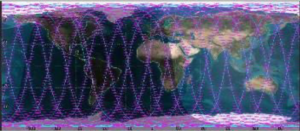the first satellite starlink project in Hong Kong
Dedicated to building smart cities of the future.
Hong Kong Aerospace Technology Group, Ltd. (HKATG), announced the launch of its first starlink project, the Guangdong-Hong Kong-Macao Greater Bay Area Golden Bauhinia Satellite Constellation this week (April 20, 2020).
Using mobile target monitoring, space AI and dynamic change monitoring, the “Golden Bauhinia Constellation” will achieve development of communications, navigation, and remote sensing systems with global 24-hour online tracking and the ability to re-visit key areas in under 30 minutes.
The “Golden Bauhinia” project aims to launch 165 low-orbit, high-frequency satellites by 2025 covering the Guangdong-Hong Kong-Macao Greater Bay Area and to serve the world’s fastest-growing urban centres. The project is also the first satellite starlink project in Hong Kong, which is dedicated to building smart cities of the future.
The Golden Bauhinia satellite constellation’s low orbit can cover the entire Greater Bay Area once every two days, which is an area of up to 56,000 square kilometres. The satellite was designed, manufactured and patented by HKATG.

Sun FengQuan, HKATG’s Chairman of the Board, said that the satellite constellation and the market economy would be increasingly closely correlated to enable the commercial space industry to quickly enter the field. He believes that HKATG, being the first enterprise to develop a satellite starlink project in Hong Kong, will be on par with the world’s top standard, benefiting the Greater Bay Area and Asian companies. It will enhance their competitiveness and help to build the smart city of the future.
Hong Kong Aerospace Technology Group, HKATG, and the Chinese University of Hong Kong, CUHK, are applying for the Hong Kong Innovation and Technology Fund, to jointly promote the application of “Big” remote sensing technology for regional public safety, smart cities, intelligent transportation, resource census data, environmental protection industrialization and other fields and, to improve the level of urban government information management in general.
Source: Hong Kong Aerospace Technology Group